How well do you know the people who follow you?
How about the people who buy from you?
While it’s helpful to create customer personas and ideal client avatars (ICA), there’s only so much they can tell us. The best way to gain a deeper understanding of your audience and increase your customer engagement is to ask them.
Some companies try to accomplish this by sending in-depth surveys or conducting customer interviews for hours on end, but there’s an easier way to gather the data you need.
We’re talking about interactive quizzes.
Your audience thinks these quizzes are a fun way to learn about themselves—which is true and valuable—but what they may not realize is just how much you can learn about their habits, interests, and personality.
In a typical ICA, you might have an idea of where your ideal client lives, what their income looks like, what gender they identify with, and what age range they fall into. These demographics are a good starting point for your marketing strategy, but they fail to give you a full picture of who’s in your audience.
Even if you dig deeper and define your ICA’s psychographics—like their motivations, goals, and interests—you still create a fictional example to represent people already in your audience. Wouldn’t it be more valuable to gather data from actual people in your audience instead?
You can do this subtly by creating a fun, share-worthy quiz experience.
There’s more to quizzes than what meets the eye.
You might think the pop culture references and GIFs make it seem less serious or strategic, but when you get down to it, quizzes can be incredibly powerful tools for understanding customer psychology.
Interactive quizzes enhance lead generation and sales strategies for businesses automating tasks. If this sounds like what you’ve been hoping for, let’s discuss generating quality leads through quizzes.
The difference between cold and warm lead generation
To improve customer engagement, you need to have a pulse on how you are generating leads. We’ll cover three main lead types today: cold, warm, and qualified. Keep reading to discover which leads are the most valuable to your business and how to attract more of them.
What are cold leads?
We’ve all been on the receiving end of a cold call. A cold call happens when an unknown company representative contacts you out of the blue to sell something.
As a cold lead, you may not know the salesperson who is calling you and you might not remember giving the company permission to contact you directly. This can understandably leave a bad taste in your mouth because the cold call comes as an unwanted interruption to your daily life and is perhaps even a minor violation of privacy.
If a company sends unsolicited emails or promotional flyers, the same outcome can occur. These kinds of cold lead generation strategies are more common with telemarketing, timeshare, credit card, and real estate companies.
While cold lead generation is still a fairly common practice, the average conversion rates for warm leads are far greater than cold leads.
Warm leads have a 14.6% close rate while cold leads stay around 1.7% on average. This is a significant difference, so why would companies spend their energy trying to connect with cold leads?
One reason is that some companies don’t have effective ways of generating warm leads. They rely on cold leads because they don’t have enough leads coming from their website, social media, or other places. Instead of focusing their energy on improving their platforms for the long term, they prioritize smaller short-term gains.
For some companies, this approach works for a while, but they are few and far between. Attracting a steady stream of quality leads is what every business dreams of, and only warm lead generation strategies will help you get there.
What are warm leads?
Unlike cold leads, warm leads are consistently generated when you offer value to people who have already expressed interest in your company or its product and services. They’ve usually given you permission to contact them when signing up for your email list, by following you on social media, or even by reading an article on your blog.
Warm leads are easier to convert because they are already aware of your company and what you offer. You don’t have to go through the taxing work of trying to get them to notice and remember you.
What are qualified leads?
Warm leads are preferable to cold leads, but need further steps to become qualified leads. Qualified leads are the best lead type because these audience members tend to be somewhere in the buying cycle already.
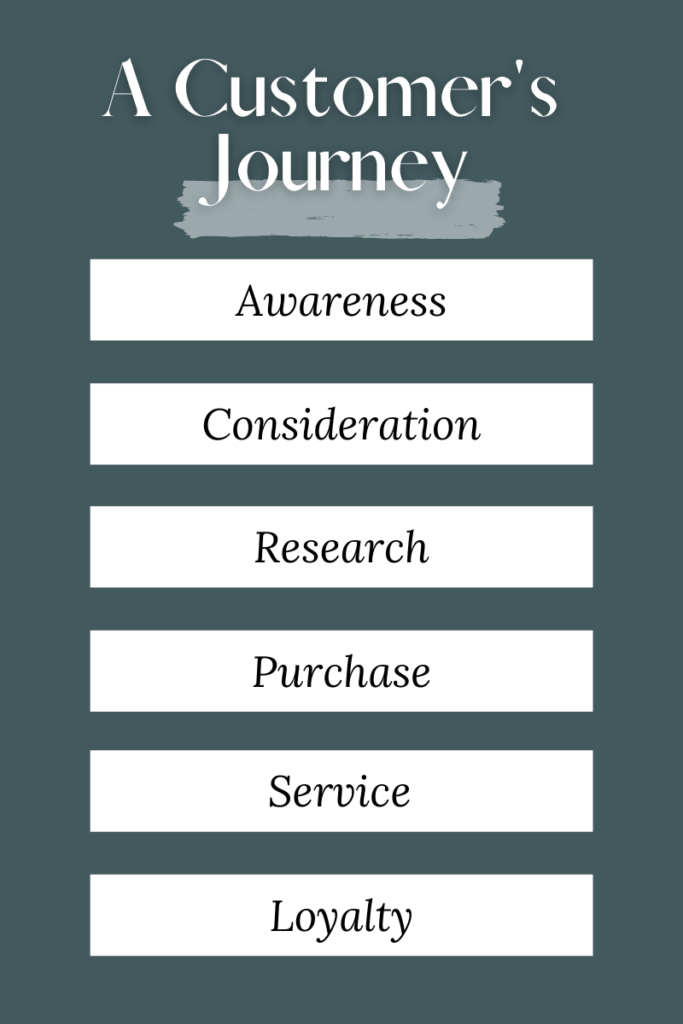
Qualified leads have typically made it past the initial Awareness stage that warm leads often stay in. During the Awareness stage, a lead knows about your brand but isn’t personally connected or ready to consider purchasing your product or service. However, when the warm lead is ready to move into the other stages of the customer journey, they become a more qualified lead as customer engagement increases.
A qualified lead could find themselves in the Research stage for months as they collect data and read reviews, or they may research for a couple of hours before moving to Consideration. It completely depends on their individual purchasing habits and desires.
Let’s take a few notes from business educator Sean McCabe of seanwes to better understand the psychology behind purchasing patterns. In a recent Instagram post, he explained the difference between creating products that are easy to sell vs. hard to sell.
When you’re able to find a product that will help your audience make money, reach their potential, change their habits, or accomplish something they value, it’s easier to sell your product and qualify your lead.

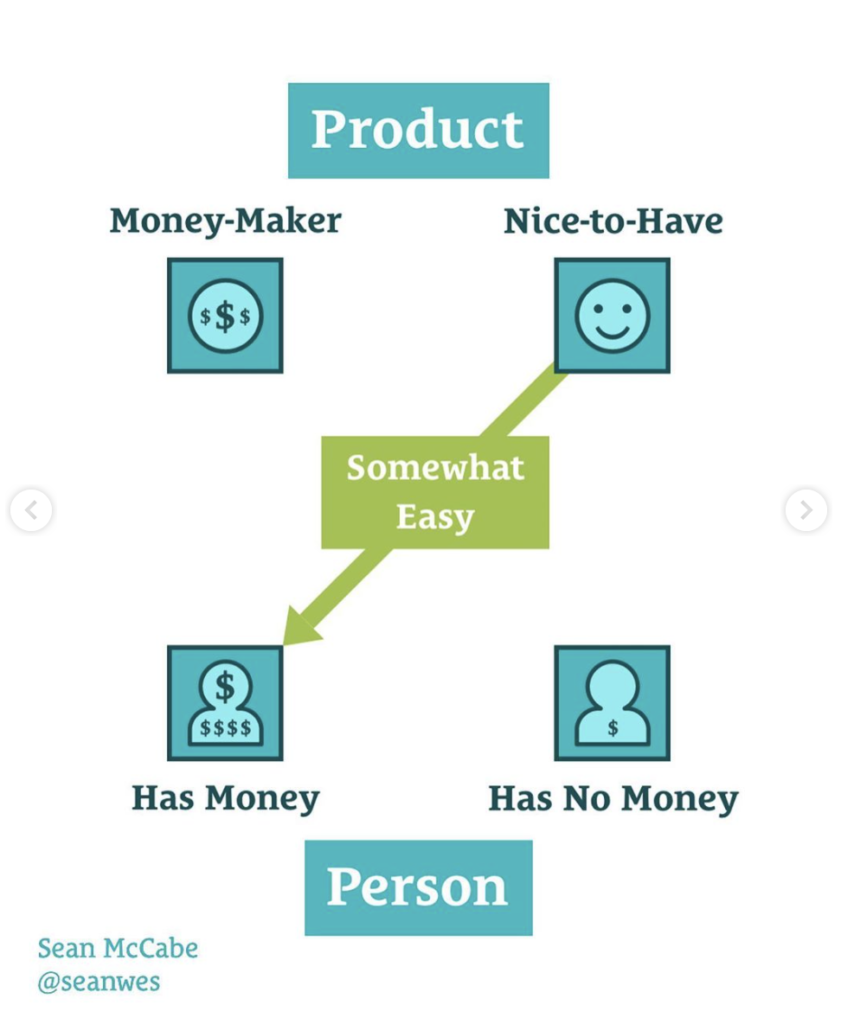
However, if you have a nice-to-have product that isn’t marketed effectively, you’ll have a much harder time qualifying your leads and selling it.
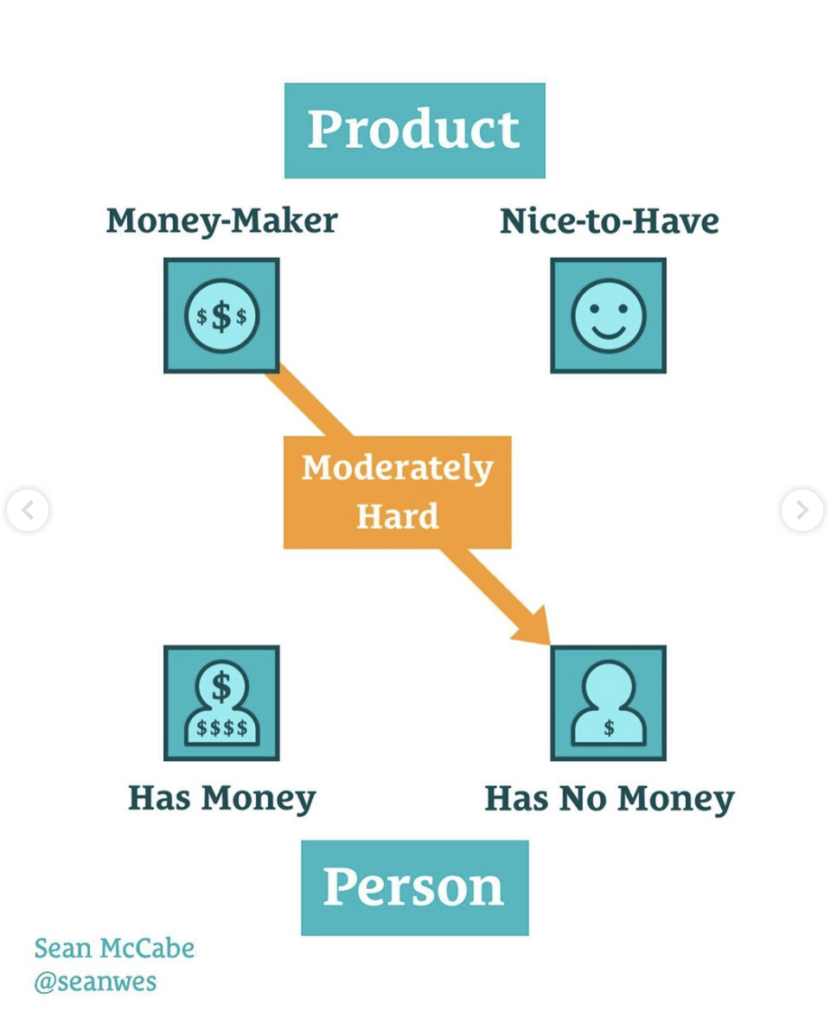
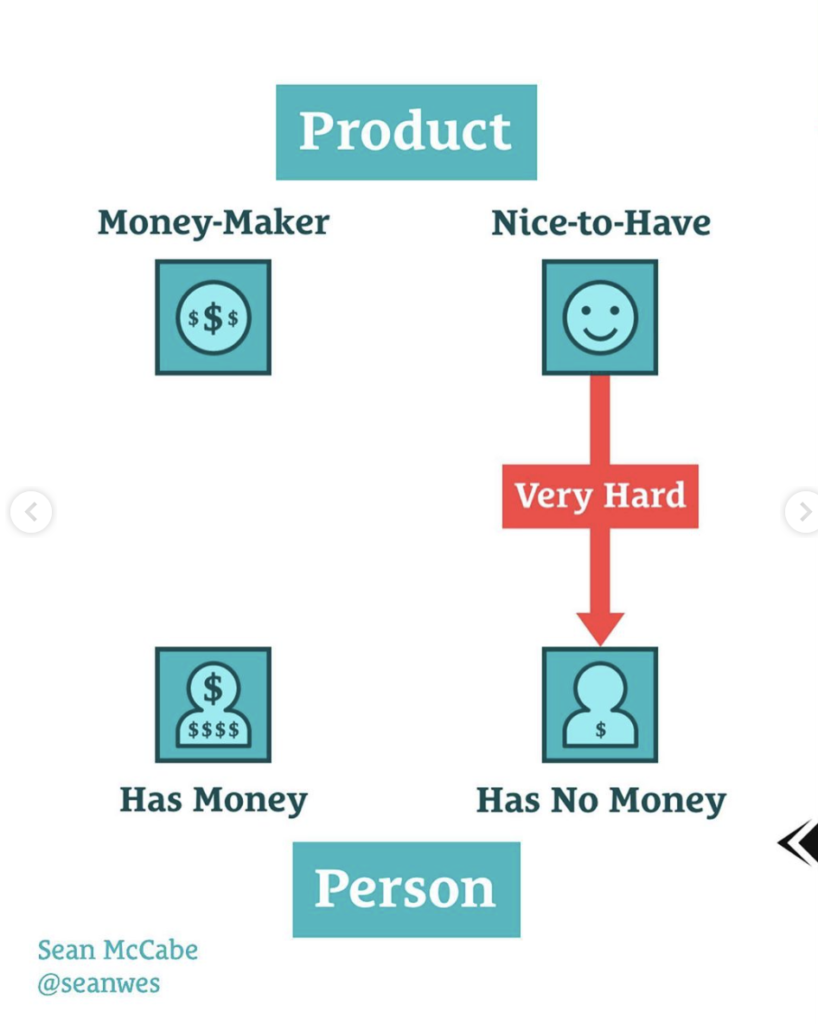
You may find that warm or qualified leads will sit in the Research or Consideration stage for weeks, months, or even years without making a purchase because they’re still unsure of the product’s worth or utility.
Your job is to provide valuable information that helps these potential buyers feel more confident in their decision. Then more qualified leads will reach the Purchase, Service, and Loyalty stages. That’s where the magic happens!
Improve customer engagement with a simplified lead generation strategy
Now that you understand the differences between cold, warm, and qualified leads, let’s talk about a simpler way to generate more leads for your business. If you want to put more of your lead generation process on autopilot, you’ll love this easy-to-follow marketing strategy!
Build a brand community on social media
What if we told you the best way to generate leads is to not treat them like leads at all? It may seem backward, but it’s better to treat them as individuals rather than potential clients or customers. People want to feel like people, not numbers.
If it feels like your brand is only trying to help someone in order to earn their purchase, it may come off as disingenuous. Instead, lead with value by building real relationships with your audience members that go beyond your products and services.
When you create educational content and share valuable information with no strings attached, you’ll build brand trust. You’ll need a strong sense of trust to earn more sales, but let’s not focus on that right now. It’s best to shift your attention and efforts on building a loyal community around your brand.
Let’s first talk about the difference between audience and community members.
People in your audience know what you offer, but brand community members like and believe in what you offer. Audience members typically engage with you after you’ve contacted them, whereas community members will engage with you on their own.
For example, if you create an Instagram post with a caption that inspires followers to share their thoughts, some may leave a thoughtful comment on the photo. Since they engaged first, we could consider them a part of your brand community. The same would be true for people who reply to your email newsletters or leave comments on your blog posts.
This example can be used for any social media platform. First, think about where your ideal clients and customers like to hang out before you decide where you want to build your social media presence. Then, track your social media analytics to see how your content is performing and determine what platforms are worth your time and energy.
Remember, it’s not necessarily about how large your brand community is (although that doesn’t hurt!) but rather how loyal they are. How likely are they to recommend you to a friend or family member? Do they publicly advocate for your brand in conversations? Would they give you a testimonial based on your interactions?
Depending on the level of interaction you’ve had with each community member, your answers may vary, but it’s good to proactively implement community strategies on social media. It allows you to tap into each follower’s network and connect with new people you never would have met otherwise.
Arguably, the best way to grow a brand community is through organic growth. This means serving the people in front of you rather than going after exponential growth. A grassroots marketing strategy like this may seem slow at first, but it’s better to have 100 people talking about your brand than 1,000 people who stay silent.
Here are some great ways to build your brand community through social media:
- Focus on solving problems by offering valuable, educational content.
- Share some of your best advice for free on social media.
- Build strong relationships with influencers and micro-influencers.
- Ask insightful questions that make followers want to engage with you.
- Reply to all comments, as long as they are productive and appropriate.
- Join social media groups that already exist, or create your own.
- Offer giveaways that encourage your followers to share your content.
- Don’t put all of your eggs in one basket by using only one social platform.
- Repurpose your content so it can be published on multiple platforms.
Social media is great for increasing your brand visibility and awareness, but what comes next? That’s what we are going to talk about now.
Direct social media followers to your email list
Too many business owners don’t have a game plan for what to do after they grow their follower count. If you forget to direct your social media followers to your next goal, you’ll find that many of them never leave the platform. That’s not ideal since it’s hard to inspire disengaged followers to take action.
People often need to be told what to do next. As a brand, you can’t expect them to find their way to your product or service on their own. It’s important to thoughtfully guide social media followers toward your next goal and give them a choice based on available options.
However, don’t try to give your followers too many options. This could lead to analysis paralysis, which causes people to feel more conflicted and confused as their options increase. You may think more options mean more opportunities to convert, but it actually works against you in marketing. Go figure!
So, instead of having too much of a good thing, stick to one main action you want followers to take. There’s a reason why most platforms only allow you to have one link in your social media bio. It’s not to annoy you but rather to focus on simple solutions that don’t overwhelm your audience.


Some brands point social media followers to the homepage or services page of their website, but if you want an even better way to stay connected with your followers, send them to a page where they can join your email list! When you utilize email marketing, you’ll be able to nurture relationships with your followers in a more intimate and personal way.
Sending an email to someone’s private inbox feels different than requiring them to scroll through their feed to see your content. Even then, they may not be able to view it. It doesn’t matter if they’re following you because platforms like Instagram and Facebook only show content to 2%-3% of your followers.
When someone joins your email list, you can send them an automated series of emails with tailored content to fit their needs. Each email will be automatically delivered to their inbox so you can be completely hands-off after you get it set up. You also have peace-of-mind knowing your email subscriber saw it in their inbox rather than missed it on social media.
Since 58% of people check email on their phones first thing in the morning—compared to social media at 14%—it’s no secret why email marketing is effective. However, how do you convince your social media followers to join your list?
One of the best ways to grow your list is by using lead magnets.
Lead magnets, also called “freebies” or “downloadables,” are free resources you create for interested audience members who want access in exchange for their email address. This can include ebooks, templates, checklists, workbooks, and more.
It’s more enticing to sign up for an email list if you know you’ll get something in return. This is why so many business owners highlight lead magnets on social media, their website, and beyond.




While most lead magnet conversion rates are around 10%-15%, quizzes have been known to generate 55%-79% opt-in rates. That means, on average, over half of the people who land on your landing page will become email subscribers. Now that’s effective marketing!
What makes quizzes stand out as a top-performing lead magnet? We’ll break it down next!
Capture attention with a lead-generating Interact quiz
Even if you’re able to capture someone’s initial attention, how can you be sure to keep it? Through a quiz, of course! Thousands of business owners are using quizzes to generate leads, grow their email list, and nurture relationships with their audience. Here are a few reasons why our quiz creators love quizzes, and why you’ll love them too!
Quizzes give your audience valuable self-knowledge
Have you ever left a quiz feeling like you learned more about yourself? It’s almost as if the quiz could read your mind. Great quizzes are purposely created to get inside your head to better understand your desires, thought patterns, motivations, and habits.
That’s why quizzes are so powerful for marketers. They help us better understand our audience while giving them unique insights they may not have been aware of. When you can positively impact someone’s self-awareness, you earn more trust and credibility.

Don’t discount how valuable your quiz results can be. You never know how a specific detail or trait could unlock more self-understanding for someone in your audience. People like to feel seen, heard, and understood—and a quiz will help you accomplish all three!
Quizzes offer a fun and interactive experience
If you haven’t been offering interactive content to your audience, you may want to rethink your marketing strategy. Interactive content gains two times more engagement than static content, so it’s important to lead with content that inspires your audience to take action.
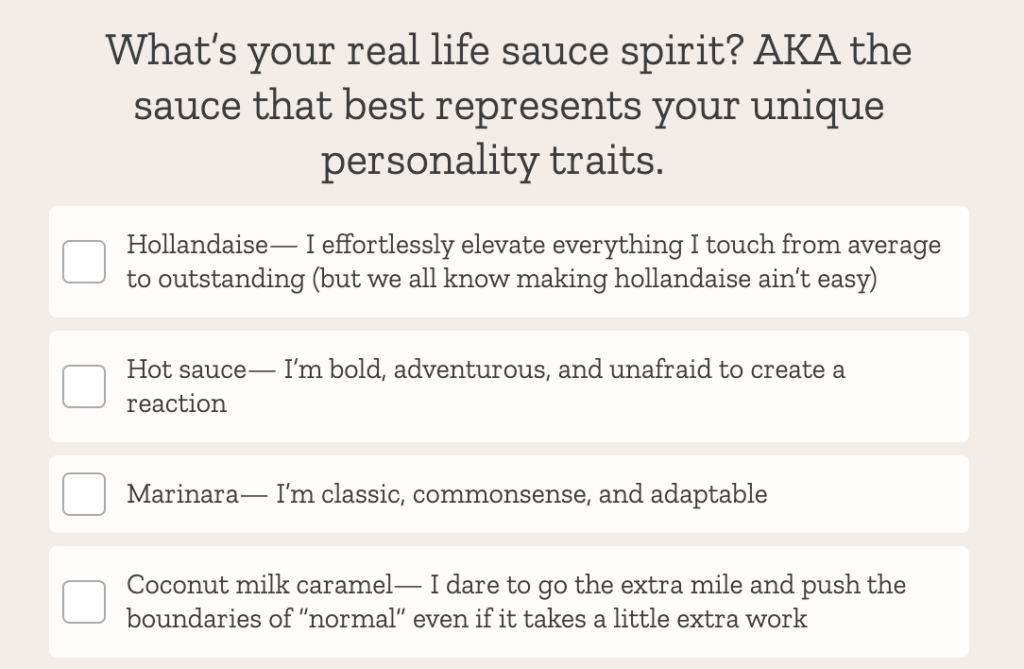
Jenna Kutcher adds a dash of fun to her brand voice in this quiz
When you create and publish a quiz, your audience has to interact with it to reach their end result. This piques their curiosity and interest as they move through the rest of the quiz. Not only is this experience more fun, but it is also far more memorable. There’s no lasting impact from the one-time action of downloading a free resource and letting it sit untouched in a Downloads folder.
Quizzes personalize content
Personalized marketing is on the rise, especially since 80% of consumers are more likely to buy from a company that offers personalized experiences. It’s not enough to simply personalize your emails by greeting customers by name. Anyone using a merge tag can do that.
Instead, suggest specific resources or give advice based on someone’s personality and desires. There are so many possibilities when you begin using personalization in your marketing.
Let’s pretend for a moment that you are a business coach. When someone joins your email list without taking a quiz, you won’t have any information about them other than their name and email address. You won’t know where they currently are in their business or what they want to accomplish.

Kaye Putnam understands what motivates her audience based on their quiz results
Too many marketers treat their audience members as if they all want the same things. This assumption is rarely true. Since each person is unique, it helps to have an interactive quiz that allows you to gather crucial data about your email subscribers so you can further personalize your follow-up email content.
Personalization allows your audience to feel like you are tailoring each message directly to them. If someone walks away from your quiz feeling like you truly know them, you’ll build trust that will translate into more sales. It’s a no-brainer!
Quizzes naturally introduce solutions to problems
Once you understand what your audience wants, it’s easier to introduce solutions that will be a perfect fit for them. You can do this through a product recommendation quiz or virtually any other quiz type.
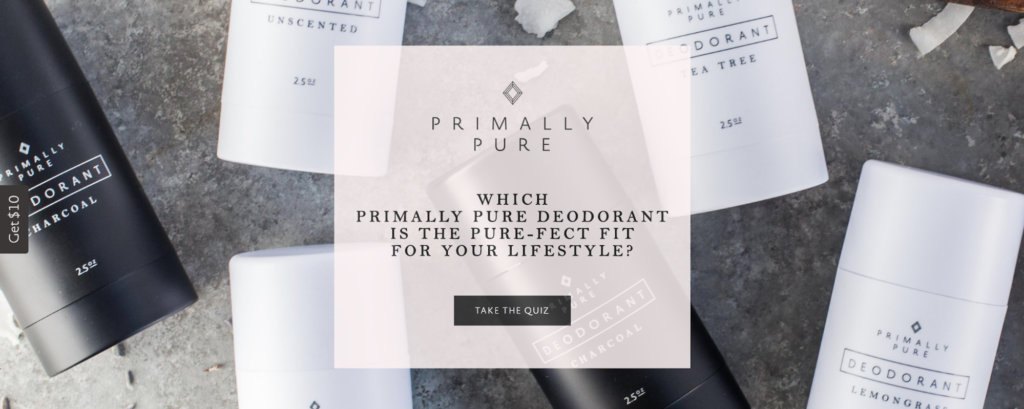
By asking your audience to self-select their answers, your quiz will do the work for you in recommending the best next step for them to take. No matter if it’s buying one of your eCommerce products, learning from you in an online course, or working with you as a service provider, you’ll be set up for success.
To start, think about the main pain points your audience has. After you’ve made a list, look at each of the problems to see if any of your offerings provide helpful solutions. Do this for all of the pain points until you see a clear way to market each of your products.
Quizzes create a personal connection
Through a quiz, your audience members will get to know more about themselves and more about you. Talk about a win-win scenario! For someone to trust you, they have to get to know you first. That’s why they call it the “know-like-trust” factor instead of the other way around.
When you’re creating your first quiz, try to find ways to put personal details into it. You can do so by adding a personal bio to your quiz result landing page, giving personal advice based on your experiences in quiz result descriptions, or anything else you can come up with.

Also, you may want to include a photo of yourself, especially if you are building a personal brand. Studies have shown that people are able to remember faces more than names. Make sure there is some kind of personal element to your quiz so it doesn’t feel robotic or formulaic.
Quizzes make it easier to segment your audience
The data you collect from a quiz can be used for more than personalization. You can use it to segment your audience. Audience segmentation comes in handy when you want to tailor your sales pitch to a specific group of people.
As you know, you can’t treat every audience member as the same person with the same needs. Segmenting your audience through your quiz will help you get away from that. All you need to do is create your quiz result types based on the data that will segment your audience.
Let’s illustrate this with the same business coach example we used above. You might be attracting audience members who are in different stages of their business. Some may be established business owners who want to learn from you while others could be aspiring business owners who want to be inspired by your content.
Unsurprisingly, they have very different motivations for following you. Not only that, but they’ll probably have a different level of understanding of topics you teach on. To make sure you aren’t sending beginner content to people who have been in business for years, you’ll want to use audience segmentation through your quiz to collect this data.
You can segment your audience based on someone’s habits, interests, learning style, and more. Below is just one example.
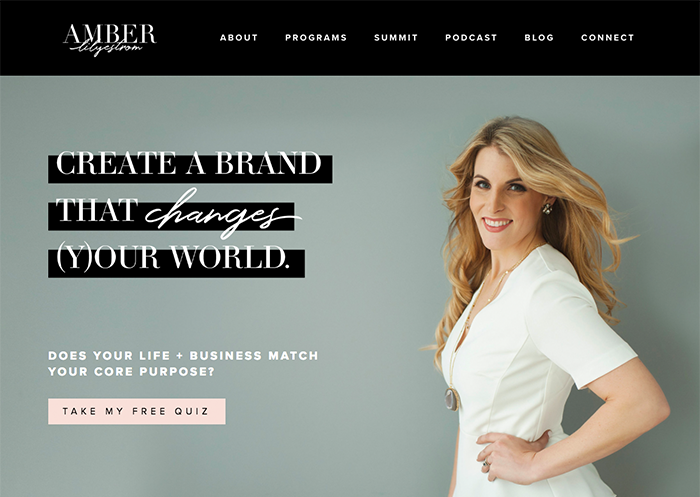
It’s best to figure out which segments will be most helpful to your business early on so you don’t have to go back and introduce them into your quiz later. The segments may reveal themselves to you easily or you may have to do some digging, but no matter what, your quiz data will be used effectively.
Make quizzes a part of your long-term strategy
Quizzes are growing in popularity, but they aren’t a passing fad. Many of our quiz creators have been using quizzes for five years or more to generate leads for their businesses.
What’s great about a quiz is that you can create it once and let it run on autopilot after. You don’t have to constantly tweak it or create something new every few weeks to stay relevant. Your quiz will do the work for you.
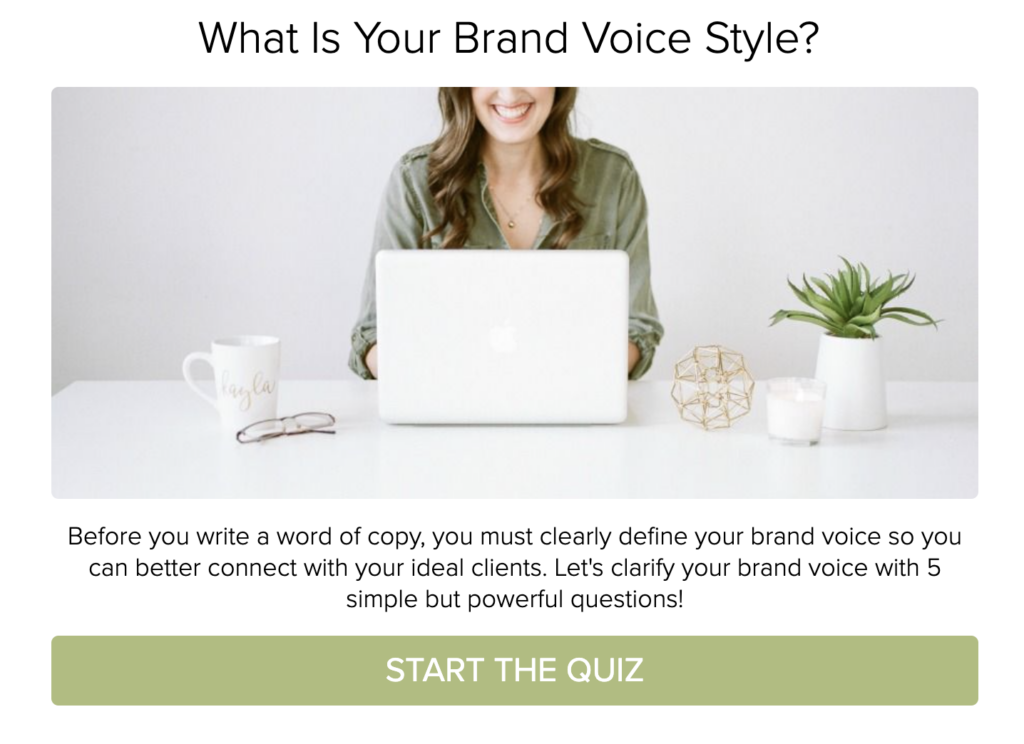
As a business owner, you shouldn’t have to worry about creating new content all the time. You have so many other things on your plate.
After you create your quiz and publish it, all you need to do is regularly promote it and watch the leads pour in. This allows you to prioritize long-term growth rather than going after short term numbers that are here today and gone tomorrow.
Are you convinced yet? Good, let’s keep going!
Next steps for quiz building
Once you’ve decided to use a quiz to grow your email list, think about how to inspire quiz-takers to become email subscribers. One way to do this is by using Interact’s email opt-in form, which appears before someone can unlock their quiz results.

For our email opt-in form, you’ll need to:
- Give quiz-takers a reason to opt-in for your email list
- Share how your email content will help them
- Set clear expectations for how often you’ll send emails
- Ask for the most necessary information (usually first name and email address)
- Let people choose not to opt-in if they don’t want to join
When you follow these steps, you’ll likely see opt-in rates around 50% or even higher.
Having an email opt-in form displayed right before the results are revealed is the best place for increasing your email conversions. That’s when intrigue and curiosity are at their highest, so it’s the perfect time to ask someone to join your list. You can make the deal even sweeter by including a special discount or freebie they’ll instantly receive when they sign up.
Once your audience member has gone from social media follower to quiz-taker, they’ll become an email subscriber after filling out the form. If you’re wondering what to do next, don’t worry. We’ve got you covered!
Engage with your audience through email marketing
So, someone in your audience just joined your email list… now what?
Naturally, you’ll want to welcome them into your email community. This is done by sending a friendly and helpful welcome email. One of the worst things you can do is stay silent and forget to send it altogether.
76% of email subscribers expect to see a welcome email hit their inbox immediately after subscribing, so make sure you deliver on your promise to send great content. It doesn’t hurt that the average open rate for a welcome email is 50%, which is greater than most regular email newsletters.
If an email subscriber is coming to your list through the quiz, it’s best to send them a quiz-focused email sequence after they receive their results. It doesn’t need to be anything fancy or overly time-consuming. Your main goal is to simply review their results, introduce yourself, give some helpful tips or advice, and share a relatable story.
Here’s a visual example of what this workflow can look like:

You can customize this framework to fit what you need or create your own version. No matter what you do, make sure your welcome email is sent immediately and consider delivering the rest of your emails based on the timeline above.
Don’t forget to include a call-to-action (CTA) at the end of your email sequence. This can look like scheduling a free discovery call, subscribing to a podcast or YouTube channel, signing up for a course waitlist, or any number of actions. Try to choose one CTA so you don’t overwhelm your audience.
Based on email open and click rates, you can see how many people are interested in learning more about your offerings or want to work with you.
Continue tracking your progress and adjust your email content if needed over time. This is what will help you turn your quiz marketing funnel into a well-oiled machine.
Make a warm lead generating quiz
If you’re sold on creating quizzes, we want to help you connect with warm and qualified leads in the easiest way possible. Let’s begin by deciding on a quiz type that’s best for your business.
Here are some of the most popular quiz types you can choose from:
Personality quiz: As the most popular quiz type, you’ll be able to help your audience understand how they are uniquely wired in this personality quiz. There are no right or wrong answers in this quiz type. All the quiz-taker needs to do is self-select answers that fit best and they’ll leave with a better understanding of themselves. In some cases, this can also be called a Buzzfeed-style quiz or even a pop culture quiz.
Trivia quiz: In a trivia quiz, you’ll be testing your audience member’s knowledge of a specific subject. This may be a good tool to determine how much someone knows before working with you so you can suggest the best service. If you sell products, you could use the same strategy in recommending products based on their prior knowledge. In some cases, this can also be called a multiple-choice quiz or assessment quiz.
Scored quiz: A scored quiz is unique in that you can decide if the score should tally how many answers someone guessed correctly or if the score is simply a way to determine someone’s final results. Scored quizzes were popular in old print magazines that made you manually tally all of your points at the end, but quiz builders like Interact do the work for you. In some cases, this can be called an IQ quiz.
After you’ve chosen your quiz type, brainstorm what topics you want to cover in the quiz. Ask yourself what you want to be known for or seen as an expert in. This will help you determine what topic you should pursue.
Once you have a topic narrowed down, you have a few more steps before you can successfully launch your first quiz and increase customer engagement:
- Decide on a quiz title and cover page description
- Create customer personas to influence your 3-5 quiz result types
- Write quiz result descriptions for each type
- Choose 7-10 questions for your quiz
- Create answer options that connect to each result type
- Start designing your quiz inside Interact
- Write a quiz follow-up email sequence
- Celebrate because you are ready to publish your quiz!
Ready to get started? Sign up for a free Interact account below!